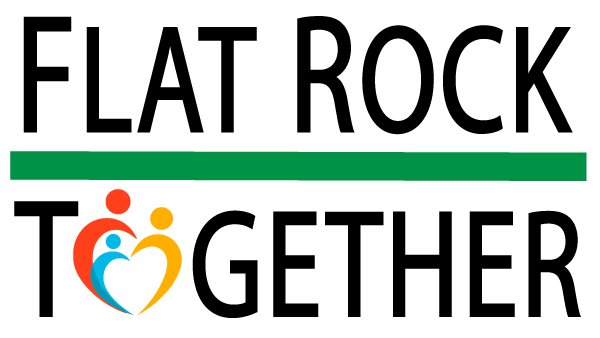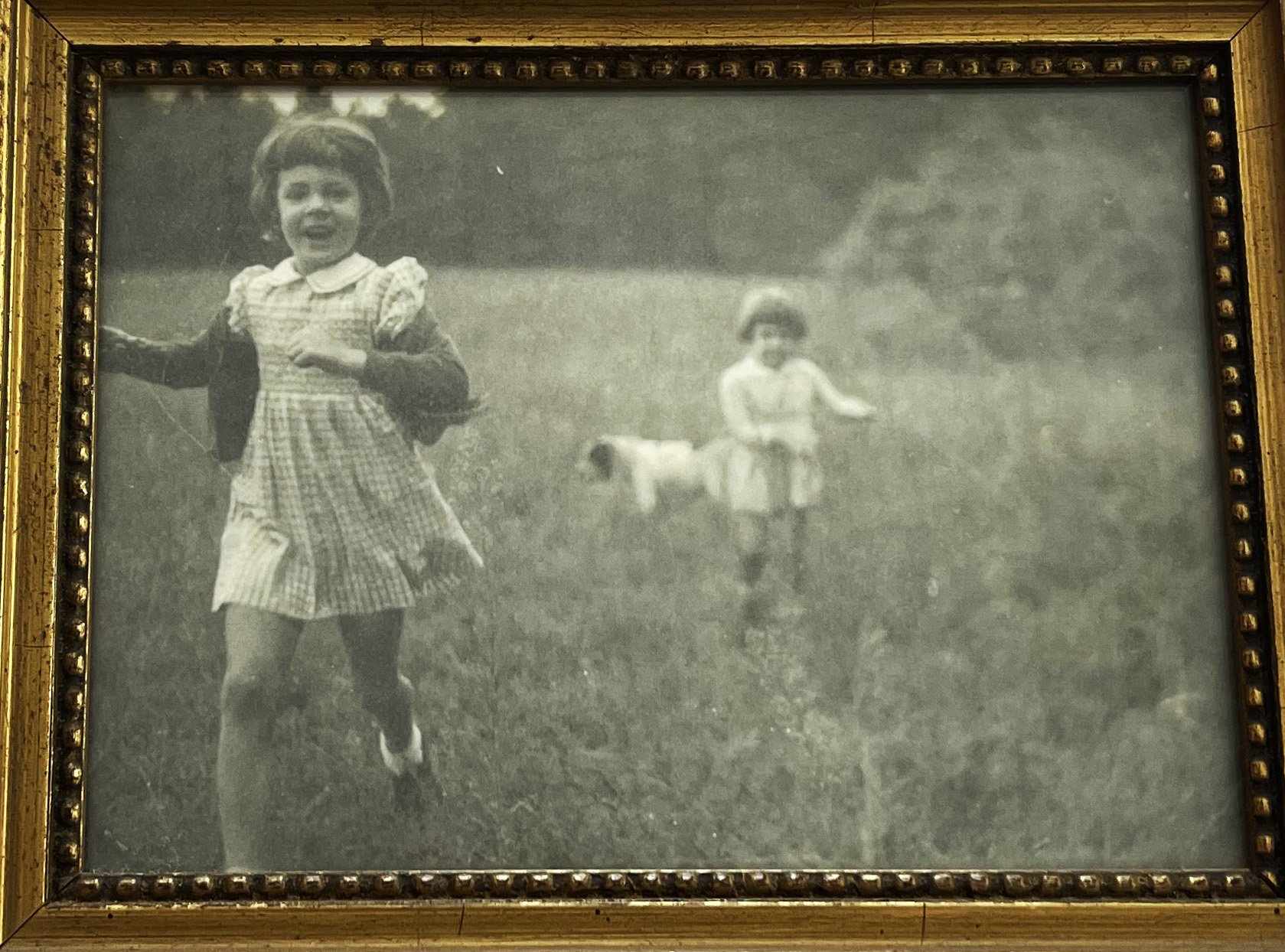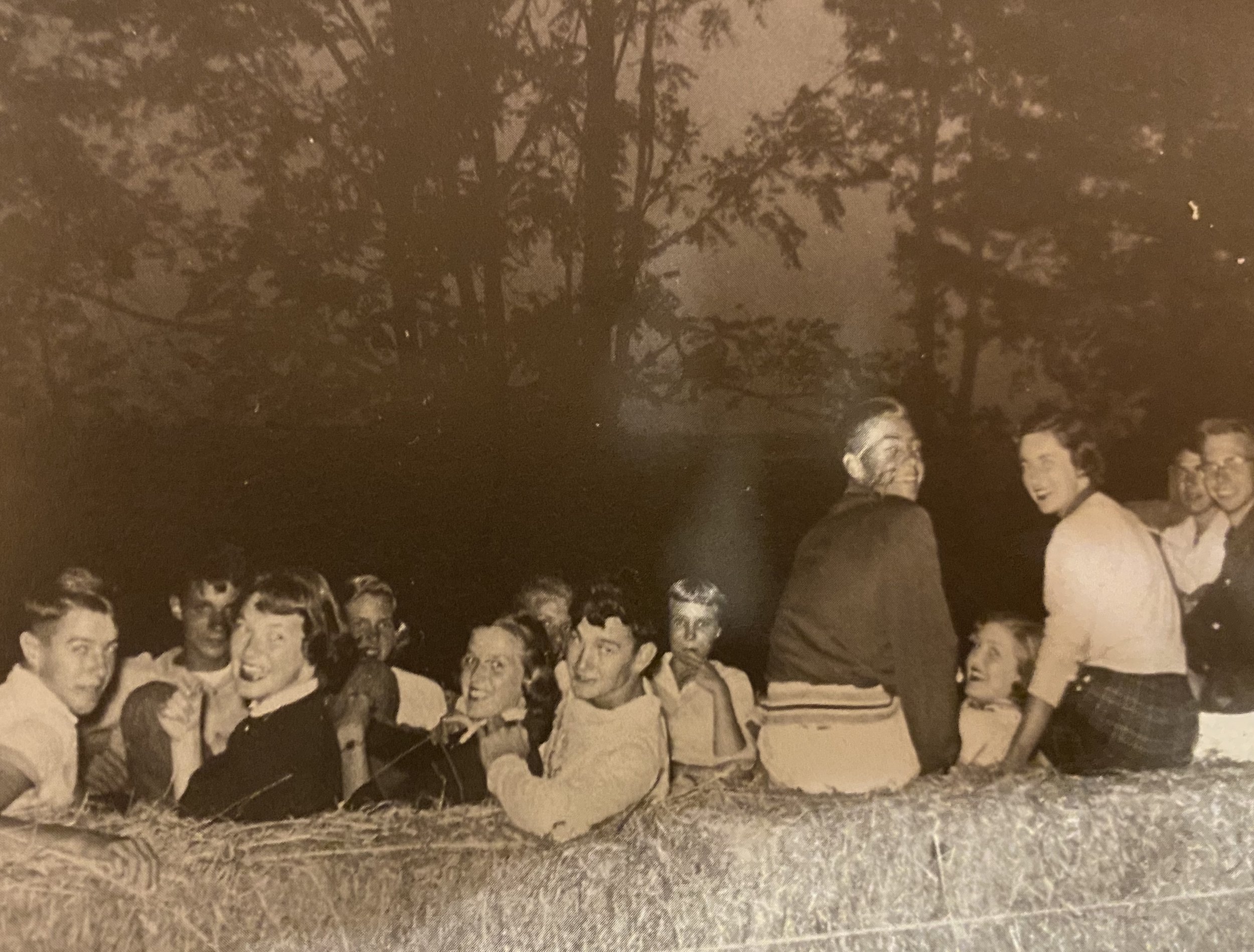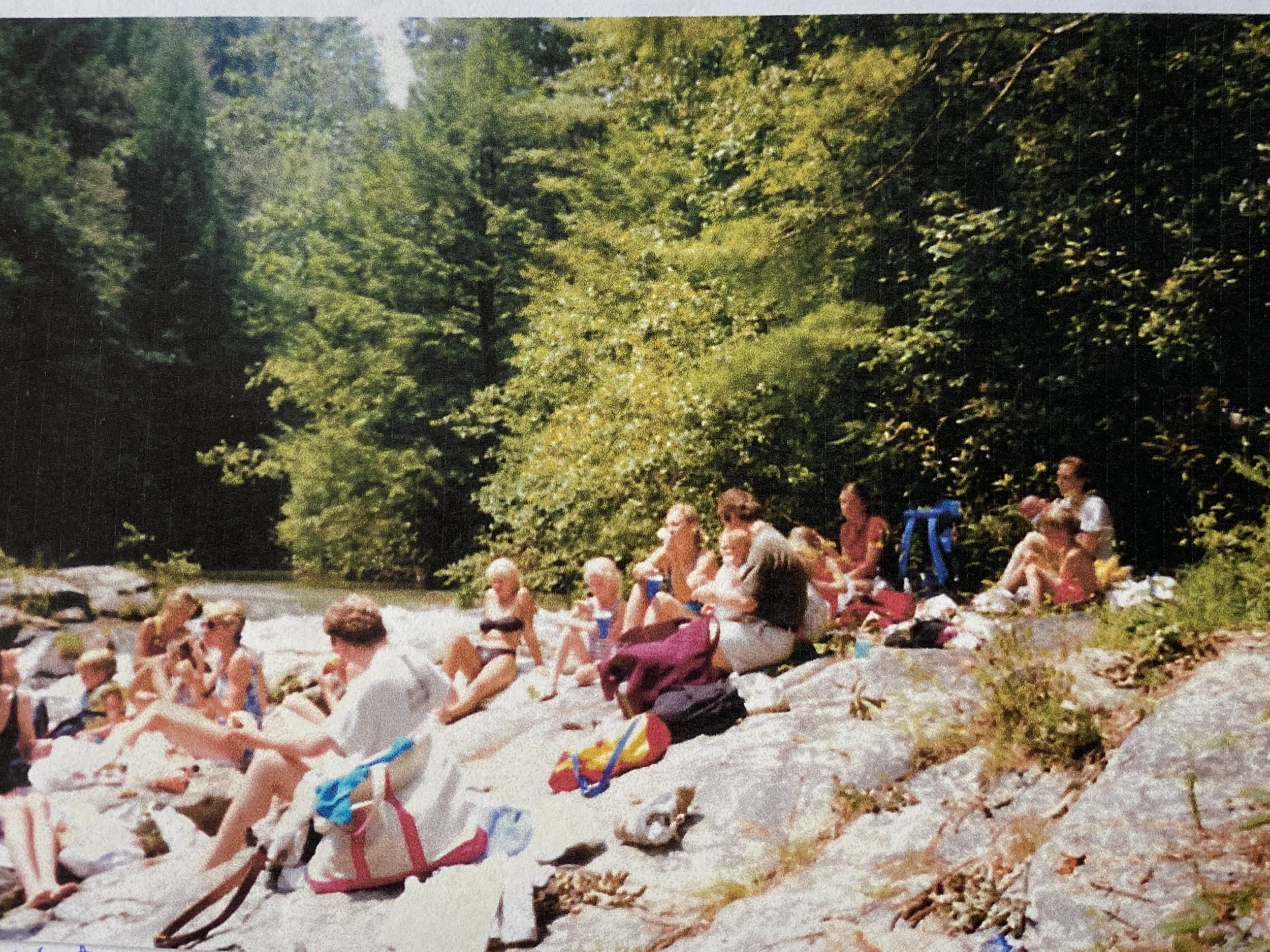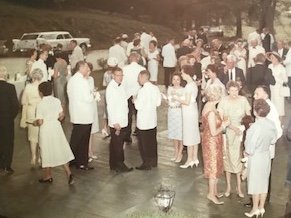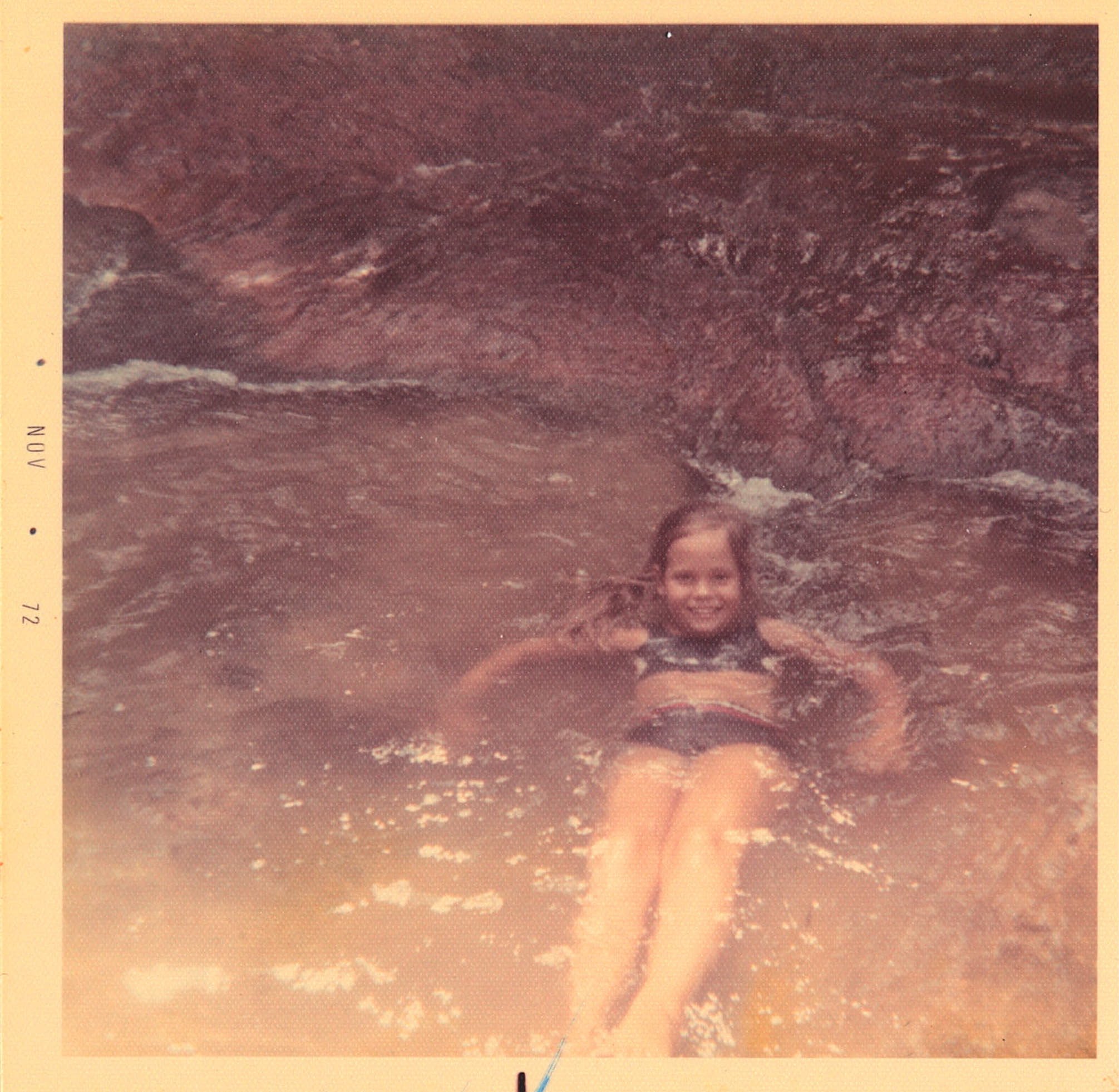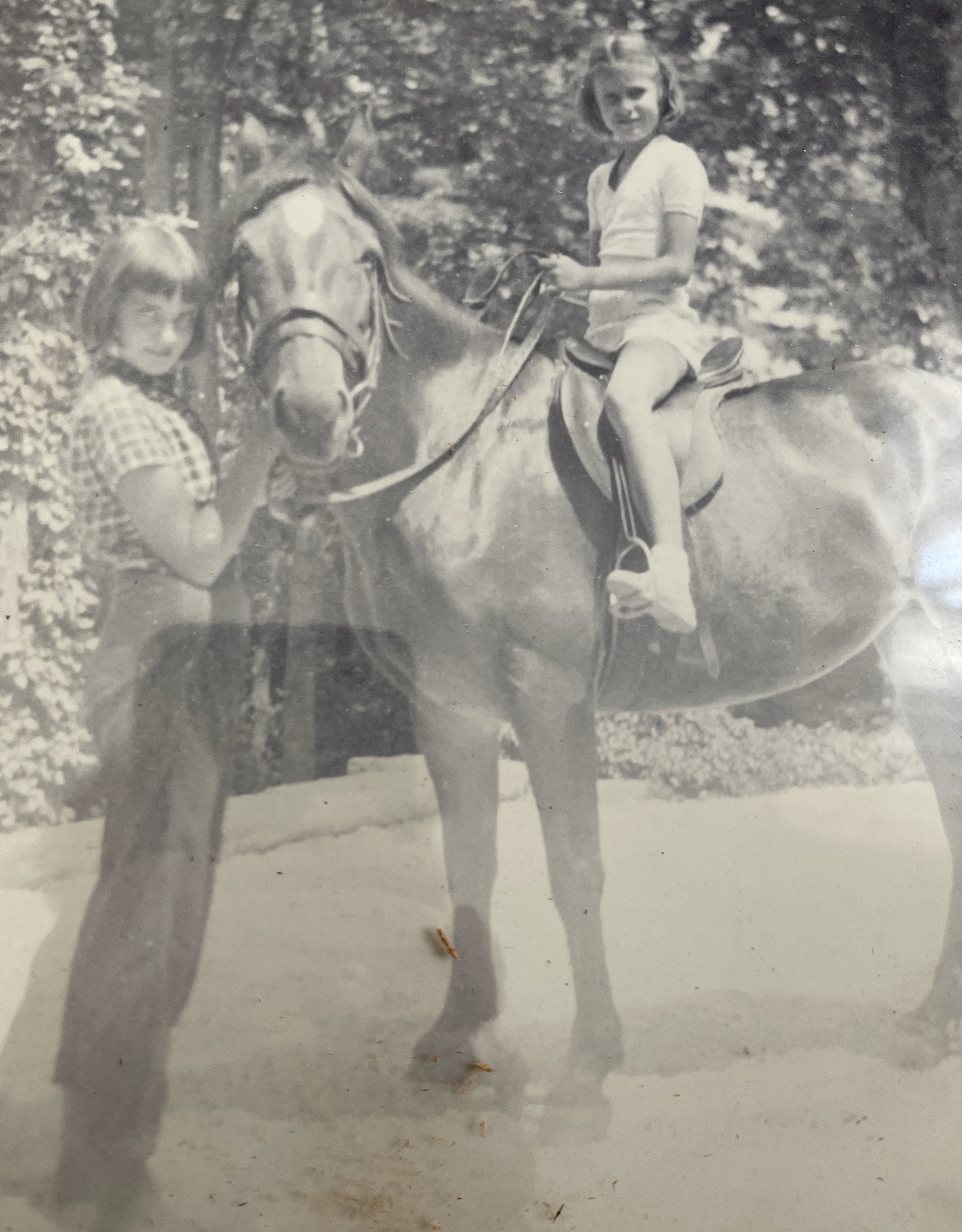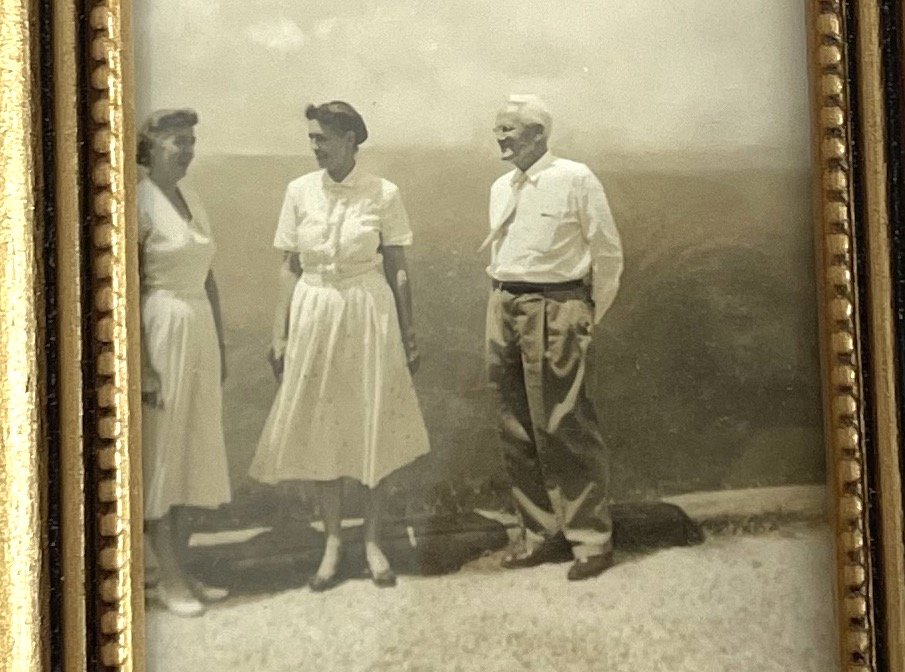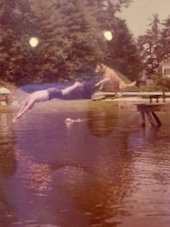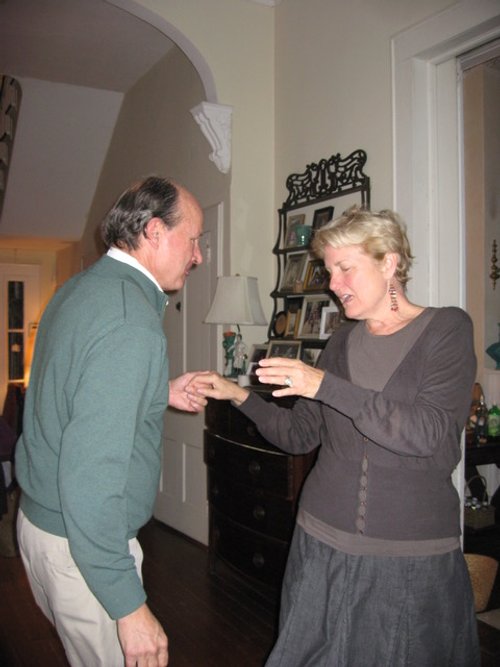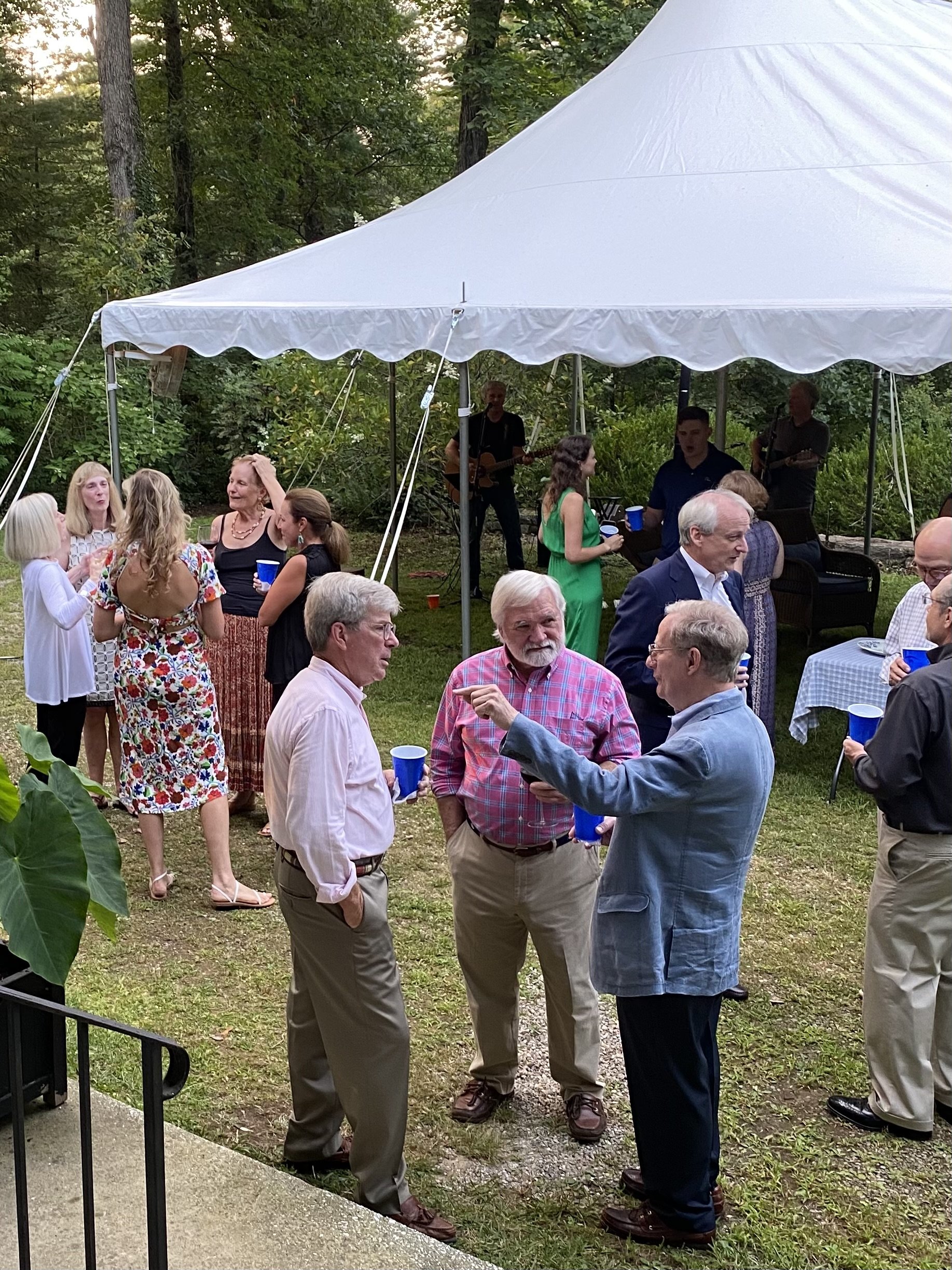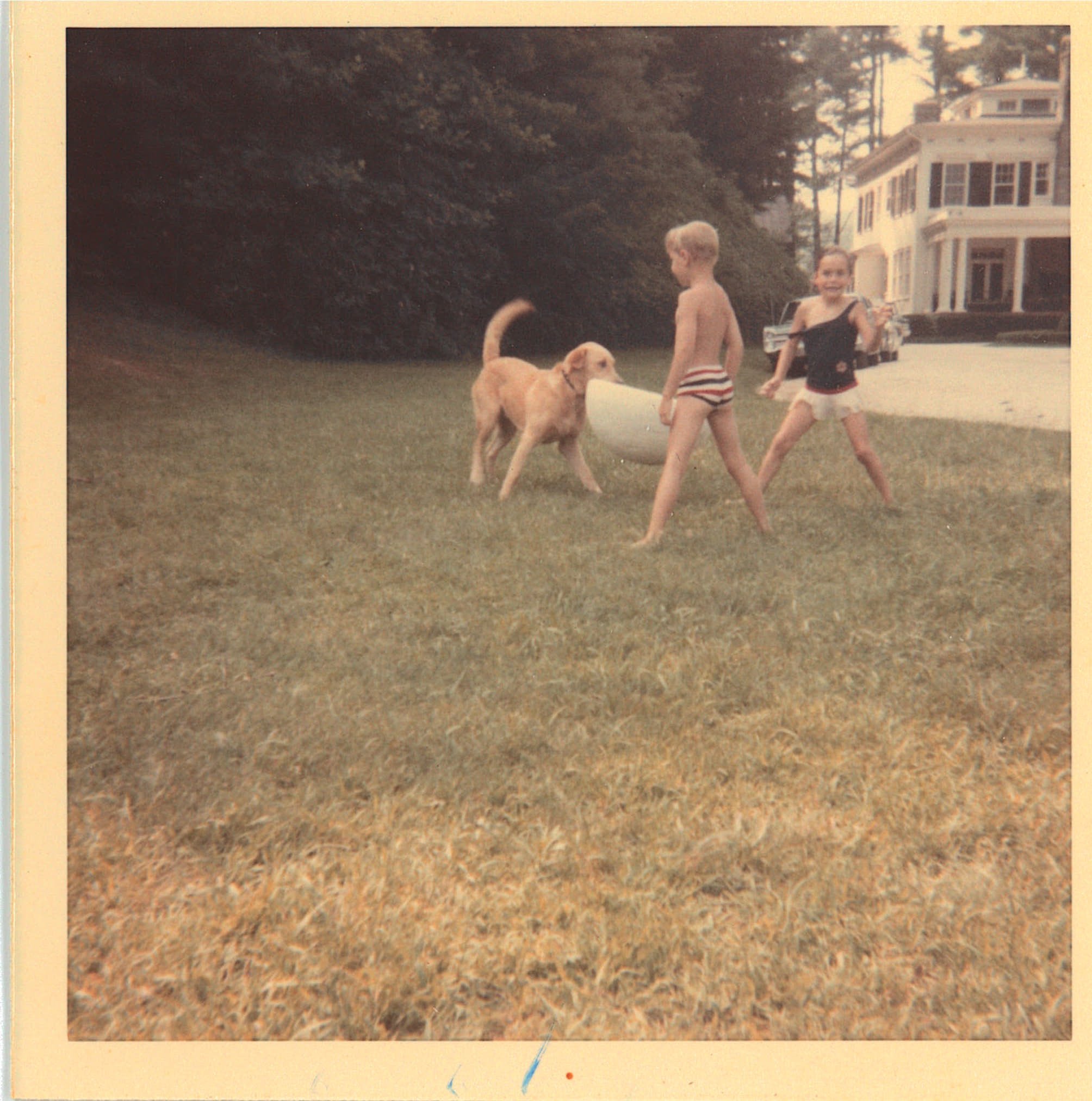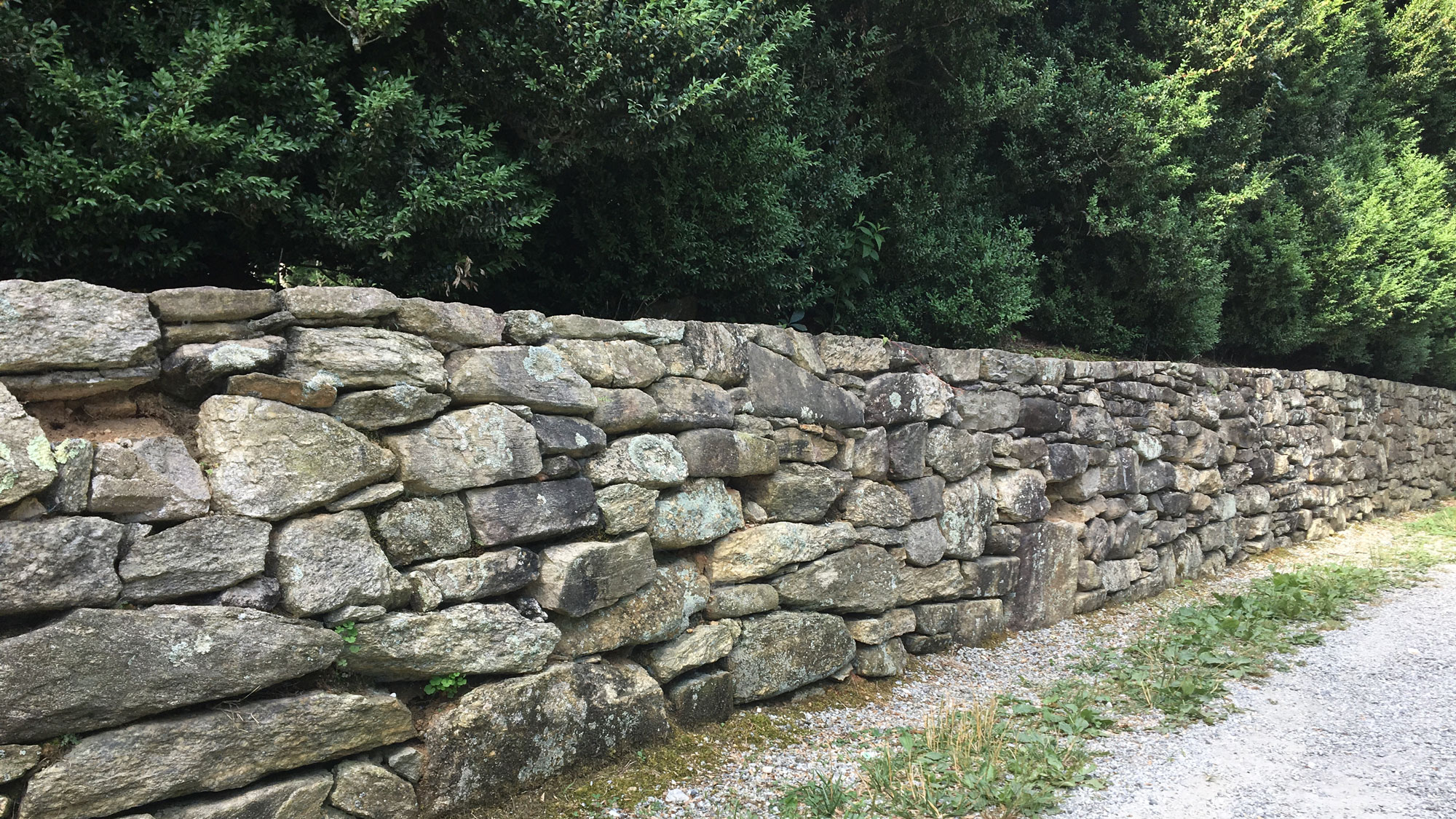Memories of Flat Rock Summers
/Picnic and games at Many Pines. Photos included with this article are courtesy of Missy Schenck, Mary Whaley Cornwell, and Clifford King Harbin.
When it’s cocktail time in Flat Rock, it must be spring and the beginning of a new season in this historic North Carolina village known as The Little Charleston in the Mountains. Very few of the present generation have heard the story about how the people of the Lowcountry of South Carolina started coming here. It is a fascinating account of that period in our history when we had dreaded diseases, plagues and epidemics before the days of vaccinations.
The background of this fascinating tale that linked these people with Henderson County goes back almost two centuries because it really started in 1830 when Judge Mitchell King brought his wife to Flat Rock for her health. His son, Dr. Mitchell Campbell King, became a country doctor practicing medicine in Henderson County and developed a theory, based on observations as a world traveler and his medical education, that the climate of the N.C. mountains was conducive to good health. He also observed that yellow fever always broke out in hot, sultry, swampy lowlands in tropical and subtropical coastal areas and never in the higher elevations. Thus the migration north to escape the dreaded heat and disease of the Lowcountry began, as did the gentle rhythm of parties, picnics, card games, swimming, horseback riding and much more.
From May until October the summer colony flourished, although at first the journey by horseback and carriage required a week to ten days and heads of households necessarily traveled to and from the Lowcountry as responsibilities dictated. The families remained throughout the summer, finding respite from the oppressive coastal heat and disease. They looked to the mountain people to plant their vegetable gardens and to supply chickens, butter and eggs. Many lifelong friendships developed between mountaineer and coastal South Carolinian as each came to respect and admire the other.
Though history tends to place an aura of wealth and ease around the Lowcountry families who made the annual trek to Flat Rock, all was not leisure and tranquility. Following the War Between the States, South Carolinians were bankrupt. Only a few were able to keep their mountain summer homes while others were forced to relinquish their properties to Northern speculators. With time, economic conditions improved, and by the turn of the century, Flat Rock’s roster of names once more reflected positions of prominence. The Little Charleston of the Mountains came alive again, spurred by the completion of the railroad from Charleston to Hendersonville in 1879.
The regularity with which the annual trek to Flat Rock took place is evident with the many families who have grown old remembering their summers there. Alex King III is part of the fifth generation of Kings to grow up spending summers at Argyle. His grandmother’s chauffeur, Albert, would drive them up to Flat Rock from Atlanta, Georgia, in her “Twin Six” 12-cylinder Packard; the children would sit on the jumper seats in the back of the car. It was always quite an adventure including tales of speeding tickets and picnics on the way.
Each morning, the family would rise early for breakfast followed by a morning outing that wove through family and friends’ properties beginning at the top of King’s Creek over at Glenroy (now Kenmure). Immersed in nature and exploration, the community of cousins and friends would make their way either on foot or horseback down Greenville Highway through the woods until they reached Acton Briars and then head back home. Swimming, fishing and picking berries were all part of the quest and differed each day as the group practiced courage and resilience.
Arrival at Argyle for the month of August with at least three bicycles from Atlanta, circa 1970. (left to right: Campbell King; Clifford King; Allison King; Alex King, (jr. - because his father was still living).
Clifford King Harbin (Alex King III’s daughter) fondly recalls summer days of independence and adventures with sixth-generation Kings and her Flat Rock summer gang: Gus Smythe and Felicia and Jeanne Wardlaw from Charleston. “Every summer we would arrive at Argyle by June 1 and my grandmother would take all of us to Sherman’s on Main Street to buy each grandchild a new pair of Keds and a gray sweatshirt. We always took off our Keds at the backdoor and our sweatshirts hung on the hooks in the back hall for chilly summer nights.”
Their daily outings were similar to her father’s route with the big treat of the day at Bonclarken’s camp store where they bought candy bars. On Wednesday afternoons they all went to the matinee at the Flat Rock Playhouse for 25 cents, and as teenagers, they’d hide beer at the Highland Lake spring house and skinny dip in the ice-cold creek nearby.
Summer after summer, indestructible relationships were cultivated and fortified by a lasting love. “It was a time long gone by the wayside,” recalls Clifford. “We were allowed to move all over the village and hitchhike with anyone who was willing to pick us up to get us back and forth between Argyle and Highland Lake. We climbed Glassy Mountain frequently and I met Carl Sandburg and sat on his lap while he sang me a song.”
Sandy Schenck recalls, “When our family first moved to Rutledge Cottage, Mr. McCabe would drive his World War II Jeep down the carriage trail between Kenmure and Rutledge Cottage on Sunday mornings and deliver a newspaper to our house.”
Mary McCabe Dudey adds, “My father was the Flat Rock paperboy! He would go get newspapers, several varieties, and deliver them to everyone’s houses. It was part of his morning routine. He would use that same Jeep and attach the trailer to it for rickety hayrides and picnics on ‘the rock’ at Kenmure. All the roads in Flat Rock were dirt then, so we spent part of our days riding all over the village on our horses, Ginger, Sunny, Chipper and pony Chief. As teenagers, my parents allowed us to have dances in the basement of Kenmure. We invited the counselors from Mondamin to come over for them. If you came to one of the dances, my father let you write your name on the basement wall.
Angie and Emily (Miss Em) Whaley running across the old Highland Lake Golf Course.
“My closest friends growing up in Flat Rock were Lizzie Huger Sterling and the Whaley girls, Miss Em, Angie and Marty,” Mary continues. The Whaleys always had a square dance every summer and Mrs. Whaley would call it with her distinctive Charleston brogue. We attached jingle taps to our loafers and duck-taped them onto our feet to clog. I remember picnics and tubing on the Green River and tennis parties at the Smythes’/Edmunds’, Robertsons’ and Bowers’. Sometimes we would have a handicap, like right-handed players versus left-handed players, depending on the skill level. We always welcomed families to swim in our fresh spring-fed lake. We definitely got into trouble for staying out too late, but it was good clean fun and a time when most gatherings included every age and generation.”
Tom Robertson remembers well warm summer days and swimming at the McCabes’ pond. “Gran would pile us all in her little red car for a swim at the McCabes’ pond. Those were the days when you could pile any number of children and dogs in a car and not worry. There were kids on the seats, the floorboards and on top of each other; the dogs always rode shotgun! The McCabes were very generous with their pond and I remember it being a great social event. The pond was freezing cold, but we were too excited to give it more than a moment’s attention. One day we were swimming in the pond and heard the most bloodcurdling howl: ‘Snake, snake, snake!’ Most of us kids were fascinated and horrified. The snake wasn’t big, but that didn’t matter. To a child’s eye it seemed four inches around and at least ten feet long and would most definitely kill. Mr. McCabe came down from the house with a shotgun and went to the edge of the pond and fired at the snake. He managed to hit it and it ended up floating lifeless on top of the water.”
Hayride in Flat Rock
On Sundays, Alice Andrews would put a note in the alms basket at church to let people know the location of the afternoon picnic. They liked to go to the Upper Green River or below Pot Shoals and to High Falls. She would leave church early to start frying the chicken. “We lived in Flat Rock year round and our house had the only telephone in the village. Everyone from Charleston would use it. My mother had a note by the phone that said, “When you come in to use the telephone, please turn the chicken.” We had the best fried chicken in town!” adds Wick Andrews, Jr.
“There were no television, electronics or air-conditioning,” recalls Annie Guerard Coletta, “just lots of card games, puzzles, time in the woods and sitting around on the porch at night telling stories. There were picnic hikes and tubing on the Green River, all generations, climbing Glassy and square dances. Saturday mornings we would go to McFarland’s Bakery for a treat. There was your usual tween mischief like sneaking into the camps, both Bonclarken and Our Lady of Grace, to play Ping-Pong and slipping off into the woods to smoke. Just having the freedom as children to go out in the morning, play all day and come in at dark was what Flat Rock summers were all about.”
Summer Picnic on the banks of the Green River
“Growing up in Flat Rock was full of self-created adventure and exploration,” says Luke Hunter. “By the age of 13, Emery Boyd and I were proficient horseback riders and would saddle up almost every sunny afternoon when school let out and ride for miles and miles on old carriage roads and hints of Indian traces. We would patrol the old roads and ride by these amazing empty antebellum homes. This is where my passion for Flat Rock’s history began. My imagination would run wild atop a horse as the tight passage of rhododendron parted around us and sealed our trail as if no one had been there since the 19th century.”
“Flat Rock may have been quiet in the 1980s,” recalls Luke, “that is, until word went out there was an afternoon get-together. The invitations might as well have been a smoke signal. There were no rules about who could come or what to wear. It was a family event every time. Running around barefoot in the grass as the sun would go down and the fireflies would come out was like living in paradise. I was surrounded by my friends and my parents were surrounded by theirs. It was a beautiful, carefree time in my memories.”
Cam Boyd on his Horse
Every day I realize how lucky I am to live in this beautiful and historic village where traditions and memories unfold a nostalgic feast for all. Flat Rock has always had a legacy of being a place for generational parties and nonstop activities. It is a grounding place that families return to year after year to assemble all the disparate pieces of their lives into one unbroken timeline, a place that makes them feel ageless and whole.
Recently, one old custom consumed a dinner party conversation with the story behind the melody “When It’s Cocktail Time in Flat Rock.” Sitting on Marianne LaTourrette Potter’s piano, I couldn’t help but ask about it. Marianne and her husband, Hop, immediately broke into song for all of us. It was hard to contain the excitement for this flashback in Flat Rock time.
According to Cam Boyd and Marianne, the song was sung at every Flat Rock cocktail party when they were growing up. The lyrics were written by Newt Angier and Eve Middleton and sung to the tune of a Gene Autry ballad. Later Cam and his wife, Sally, resurrected it for a Historic Flat Rock gala held at their family home, Saluda Cottages. Dormant for decades, this old tune has been waiting for years to come back to life. Perhaps this summer is the time to reawaken it and restore the gentle rhythm of life to a place we all love.
When It’s Cocktail Time in Flat Rock
There’s a time between daylight and darkness
When the evening’s beginning to lower,
Comes a pause in the day’s occupation
That is known as the cocktail hour.
There may be a fly in the vermouth,
There may be a flaw in the gin,
But now is the time to drink cocktails,
And now is the time to begin.
When it’s cocktail time in Flat Rock
And the daily chores are done,
We will gather round old (host’s name)
And we’ll have a lot of fun.
We will sing the old songs gaily,
And we’ll sing some new ones, too.
And we’ll wish some wealth and lots of health
to you, and you, and you.
Summer Party at the McCabe’s.
Missy Craver Izard Schenck was born and raised in Charleston, South Carolina. She resides in Flat Rock, North Carolina, with her husband, Sandy Schenck, where their family runs a summer camp. Missy currently serves as the president of Historic Flat Rock, Inc., a position once held by her father-in-law, Alex Schenck, the first president of the organization and a founding trustee.
This story was originally published by the Charleston Mercury, “When it is Cocktail Time in Flat Rock.”
